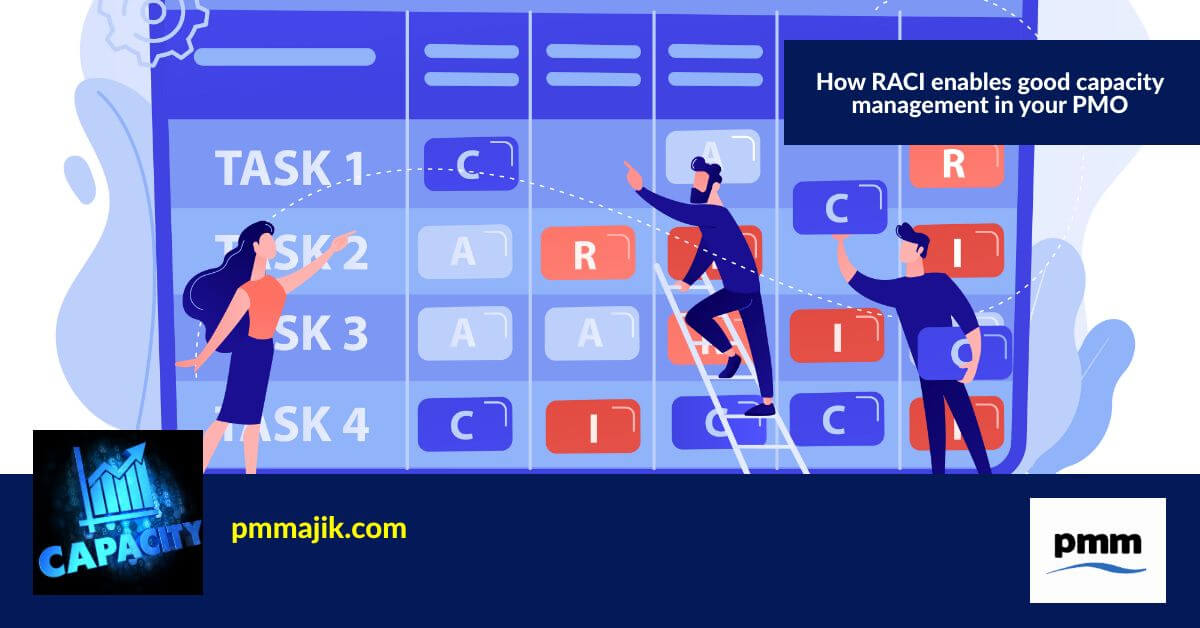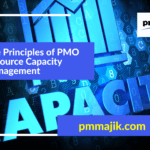With many resources being managed by your project management office (PMO), you need to good capacity management. Using a RACI matrix has many benefits; enabling good capacity management within your PMO is definitely one of them.
As well a being a powerful tool to drive your project forward, a RACI matrix will give plenty of information about human resources capacity. In the article, we’re going to cover:
- The basics of what a RACI matrix does
- What aspects of resource capacity management it can help
- How your PMO can adjust its capacity management based on your RACI matrix
So that you have a new addition to your resource capacity planning framework.
What is a RACI matrix?
A RACI matrix outlines who will be doing what within a project. It involves breaking down the project into tasks as then assigning roles to each task. The four roles within a RACI matrix are:
- Responsible
- Accountable
- Consulted
- Informed
It’s very useful to keep a project on track. People management can be tricky within a PMO; your office will usually sit directly below the C-suite but most of the human resources in your remit will belong to other parts of the business.
A RACI matrix will mean that everyone is aware of what they need to within their project before it starts.
How does a RACI matrix help a PMO’s resource capacity management?
When your PMO is putting together the RACI matrix for a particular project, it’s usually the first time that the project gets broken down in detail. Every task needs to be laid out so that it can be assigned to people.
Initially, this is a good time to look at all other resources, besides people, that will be needed. With a list of all of the tasks to complete, you should know what machinery, software, and space is going to be required, too.
In terms of planning your human resources needs, the RACI matrix that gets produced will be invaluable. Some of the things a RACI can help your resource manager plan for include:
Identifying gaps
When you see lots of responsibilities and accountabilities all stacking up next to one or two names in your RACI, there may be a problem. One person can take on too much responsibility. Too many things needing the sign-off from one person can cause a bottle neck in a process.
To combat this, ensure that you have enough people in the project who have enough authority to sign off parts of a project. This may mean bringing in more people to the project, or levelling up the people you already have.
Find training needs
If you need more people able to be responsible for a project, you will likely need to train them. Going through the tasks might highlight other skills that are lacking in the project. This needs to be understood in the planning phase so that enough time can be allocated to resolve the issue.
Your office needs to plan the training and upskilling needed for the project. Understanding what each task on the matrix needs means you know ahead of time if you need a new programming languages or engineering skills.
Areas of overcapacity
It’s not just those responsible that can get lots of work assigned to them. At the time of putting together the RACI you many realise that some of your team have too much expected of them. It’s possible that when putting together the project team, initial estimates of how many people would be needed weren’t accurate.
Once you know a project is overcapacity, you can either recruit and onboard new team members, or bring in the right people from around the business. Your office should run an exercise to understand why forecasts were off for the project to avoid the same happening in the future.
The take home
A RACI matrix is a great planning tool. It ensures that everyone working on a project knows what they should be doing. Your office can plan for the right level of work and responsibility for each person on the project.
It’s also very useful to spot problems with your human resource capacity. You can see which skills are going to be needed, whether one person is taking on too much, and whether there needs to be new additions to a project to ensure it’s delivered on time.






